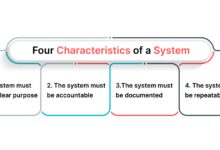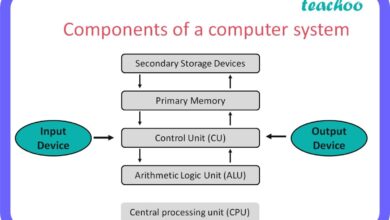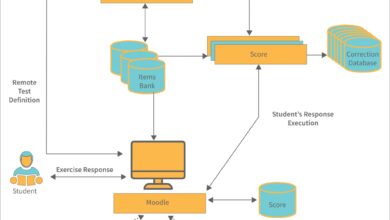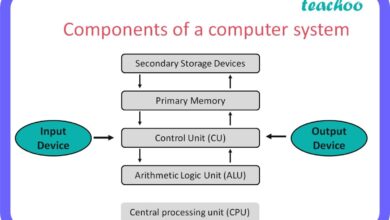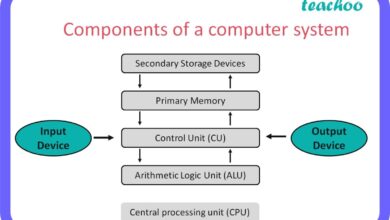System Analysis: 7 Powerful Steps to Master the Ultimate Breakdown
Ever wondered how complex software, business processes, or IT infrastructures are designed to work seamlessly? The secret lies in system analysis—a powerful, structured approach that turns chaos into clarity. It’s the backbone of smart decision-making in tech and business.
What Is System Analysis? A Foundational Understanding

At its core, system analysis is the process of studying a system or its components to identify its objectives, functions, and constraints. It’s about understanding how things work, where inefficiencies lie, and how improvements can be made. This isn’t just about technology—it applies to business workflows, healthcare systems, logistics, and even government operations.
The Definition and Scope of System Analysis
System analysis involves examining a system’s inputs, processes, outputs, and feedback mechanisms to evaluate its performance. It’s not limited to IT systems; it spans across engineering, management, and organizational behavior. According to the IEEE Computer Society, system analysis is critical in software engineering for defining requirements and ensuring alignment with user needs.
- It identifies problems within existing systems.
- It evaluates alternative solutions.
- It ensures that new systems meet stakeholder expectations.
Historical Evolution of System Analysis
The roots of system analysis trace back to the mid-20th century, particularly during World War II, when operations research was used to optimize military logistics. By the 1960s and 70s, with the rise of mainframe computers, system analysis became a formal discipline in information systems. The development of structured methodologies like SSADM (Structured Systems Analysis and Design Method) in the UK marked a turning point.
“System analysis is not just about technology—it’s about understanding human needs within a technological framework.” — Dr. James Martin, Pioneer in Information Engineering
Why System Analysis Matters Today
In today’s digital-first world, organizations rely on system analysis to remain competitive. Whether it’s automating customer service, improving supply chain visibility, or launching a new app, system analysis ensures that solutions are not only technically sound but also aligned with business goals. Without it, projects risk cost overruns, delays, and failure to meet user expectations.
The Key Objectives of System Analysis
System analysis isn’t a random exercise—it has clear, measurable objectives that guide the entire process. These objectives ensure that the analysis delivers value to stakeholders and supports long-term success.
Identifying System Requirements
One of the primary goals of system analysis is to gather and define both functional and non-functional requirements. Functional requirements describe what the system should do (e.g., process orders, generate reports), while non-functional requirements cover performance, security, scalability, and usability.
- Functional: “The system must allow users to reset passwords.”
- Non-functional: “The system must respond to login requests within 2 seconds.”
- User-centric: “The interface must be accessible to visually impaired users.”
Improving System Efficiency
Through system analysis, inefficiencies such as redundant processes, data silos, or outdated technologies are identified and addressed. For example, a retail company might discover that its inventory tracking system requires manual data entry across three departments, leading to delays and errors. System analysis would recommend automation or integration to streamline operations.
A study by Gartner found that organizations that conduct thorough system analysis before implementing new software see up to 40% higher ROI compared to those that skip this phase.
Ensuring Alignment with Business Goals
System analysis bridges the gap between technical capabilities and strategic business objectives. A marketing team may want a CRM system to improve customer engagement. System analysis ensures that the chosen solution supports lead tracking, campaign analytics, and integration with social media platforms—directly contributing to revenue growth.
The 7-Step System Analysis Process: A Complete Breakdown
To achieve reliable results, system analysis follows a structured methodology. While variations exist (like Agile or Waterfall), the following seven steps provide a comprehensive framework applicable across industries.
Step 1: Preliminary Investigation and Problem Identification
This initial phase involves understanding the problem at hand. Analysts conduct interviews, review documents, and observe current processes to define the scope of the system analysis. Questions asked include: What is not working? Who is affected? What are the symptoms of the problem?
- Define the problem clearly (e.g., “Customer complaints about delayed order fulfillment”).
- Determine project feasibility (technical, economic, operational).
- Establish preliminary goals and constraints.
Step 2: Information Gathering and Data Collection
Data is the lifeblood of system analysis. Analysts use various techniques to collect information, including:
- Interviews: One-on-one discussions with stakeholders.
- Questionnaires: Structured surveys to gather quantitative data.
- Observation: Watching users interact with the current system.
- Document Analysis: Reviewing manuals, reports, and logs.
Tools like Lucidchart or diagrams.net help visualize workflows and data flows during this stage.
Step 3: Data Analysis and Process Modeling
Once data is collected, it’s analyzed to understand how information flows through the system. Process modeling techniques like Data Flow Diagrams (DFDs), Use Case Diagrams, and Entity-Relationship Diagrams (ERDs) are used to represent the system visually.
- DFDs show how data moves between processes, data stores, and external entities.
- Use Case Diagrams illustrate interactions between users (actors) and the system.
- ERDs model the relationships between data entities in a database.
“A picture is worth a thousand lines of code.” — Common adage in system design, emphasizing the value of visual modeling in system analysis.
Step 4: Identifying Alternative Solutions
System analysis doesn’t stop at understanding the current state—it explores possible future states. Analysts brainstorm and evaluate multiple solutions, such as upgrading software, reengineering processes, or adopting cloud-based platforms.
- Cost-benefit analysis of each option.
- Risk assessment (e.g., data migration challenges).
- Stakeholder feedback on proposed changes.
For instance, a hospital might consider switching from paper records to an Electronic Health Record (EHR) system. System analysis would compare vendors, implementation timelines, training needs, and compliance with HIPAA regulations.
Step 5: Feasibility Study
Before recommending a solution, analysts conduct a feasibility study to assess whether it’s practical. This includes:
- Technical Feasibility: Can the organization’s infrastructure support the solution?
- Economic Feasibility: Will the benefits outweigh the costs?
- Operational Feasibility: Will users adopt the new system?
- Schedule Feasibility: Can it be implemented within the required timeframe?
A Net Present Value (NPV) analysis or Return on Investment (ROI) calculation is often used to justify decisions financially.
Step 6: Preparing the System Proposal
The findings and recommendations are compiled into a formal system proposal. This document serves as a blueprint for decision-makers and development teams. It typically includes:
- Executive summary
- Problem statement
- Requirements specification
- Proposed solution and architecture
- Implementation plan
- Budget and resource estimates
- Risk mitigation strategies
The proposal must be clear, concise, and persuasive—often presented to executives or project sponsors for approval.
Step 7: Presenting Results and Gaining Approval
The final step involves presenting the system proposal to stakeholders. This is a critical moment—success depends on effective communication, stakeholder buy-in, and addressing concerns. Visual aids, prototypes, and cost-benefit charts are often used to strengthen the case.
- Hold presentation meetings with key decision-makers.
- Address questions and objections.
- Secure formal approval to proceed to system design and implementation.
Types of System Analysis: From Functional to Strategic
Not all system analysis is the same. Depending on the context, different types are applied to address specific challenges.
Functional System Analysis
This focuses on what the system should do—its functions and features. It’s commonly used in software development to define user requirements and system behavior. For example, in an e-commerce platform, functional analysis would specify features like product search, shopping cart, and payment processing.
Structural System Analysis
Also known as architectural analysis, this examines the system’s components and their interconnections. It answers questions like: How is the system built? What technologies are used? How do modules communicate? This type is crucial in large-scale systems like enterprise resource planning (ERP) software.
Strategic System Analysis
This goes beyond technical details to align IT systems with long-term business strategy. It’s often conducted at the executive level to determine how technology can support competitive advantage, market expansion, or digital transformation. For example, a bank might use strategic system analysis to decide whether to invest in AI-driven fraud detection systems.
Tools and Techniques Used in System Analysis
Modern system analysis relies on a combination of methodologies, frameworks, and software tools to ensure accuracy and efficiency.
Structured Analysis Techniques
These are traditional, linear methods that follow a step-by-step approach. Examples include:
- Structured Systems Analysis and Design Method (SSADM): A UK government-developed methodology emphasizing documentation and rigor.
- Waterfall Model: A sequential design process where each phase must be completed before the next begins.
- Data Flow Diagrams (DFDs): Visual representations of data movement.
Object-Oriented Analysis (OOA)
This approach models the system as a collection of interacting objects. It’s widely used in modern software development, especially with languages like Java and C++. Key techniques include:
- Use Case Modeling (from UML – Unified Modeling Language)
- Class Diagrams
- Sequence Diagrams
The Object Management Group (OMG) maintains UML standards, which are essential in object-oriented system analysis.
Agile and Iterative Analysis
In contrast to rigid models, Agile promotes flexibility and continuous feedback. System analysis in Agile is iterative—requirements evolve through sprints and user feedback. Tools like Jira, Trello, and Confluence support this dynamic approach.
- User stories replace formal requirement documents.
- Daily stand-ups keep analysts aligned with developers.
- Prototypes are built early for user validation.
“The best architectures, requirements, and designs emerge from self-organizing teams.” — Agile Manifesto, highlighting the shift in how system analysis is conducted in modern environments.
The Role of a System Analyst: Skills, Responsibilities, and Career Path
A system analyst is the bridge between business and technology. They translate user needs into technical specifications and ensure that systems deliver real value.
Core Responsibilities of a System Analyst
The day-to-day work of a system analyst includes:
- Conducting requirement-gathering sessions with stakeholders.
- Analyzing business processes and identifying bottlenecks.
- Designing system models and workflows.
- Collaborating with developers, testers, and project managers.
- Documenting system specifications and user manuals.
- Testing and validating system functionality.
Essential Skills for Success
To excel in system analysis, professionals need a mix of technical and soft skills:
- Technical Skills: Knowledge of databases, programming basics, networking, and system design.
- Communication Skills: Ability to explain complex concepts to non-technical stakeholders.
- Problem-Solving: Identifying root causes and proposing effective solutions.
- Attention to Detail: Ensuring requirements are complete and unambiguous.
- Project Management: Managing timelines, resources, and deliverables.
Career Growth and Certifications
Many system analysts start as business analysts or IT support specialists and grow into roles like Senior System Analyst, Solutions Architect, or IT Consultant. Certifications can boost credibility and career prospects:
- Certified Systems Analyst (CSA) – Offered by various institutions.
- PMI-PBA (Project Management Institute – Professional in Business Analysis)
- Certified Business Analysis Professional (CBAP) by IIBA
- TOGAF for enterprise architecture.
Common Challenges in System Analysis and How to Overcome Them
Despite its benefits, system analysis is not without challenges. Recognizing these pitfalls early can prevent project failure.
Unclear or Changing Requirements
One of the biggest challenges is when stakeholders cannot clearly articulate their needs or change their minds mid-project. This leads to scope creep and delays.
Solution: Use iterative methods like Agile, maintain a change control process, and document all requirements formally.
Lack of Stakeholder Involvement
If key users or decision-makers are not engaged, the resulting system may not meet real needs.
Solution: Conduct regular workshops, demos, and feedback sessions. Assign business representatives to the project team.
Poor Communication Between Teams
When developers, analysts, and business units don’t communicate effectively, misunderstandings occur.
Solution: Use collaboration tools, hold cross-functional meetings, and create shared documentation.
Overlooking Non-Functional Requirements
Performance, security, and usability are often neglected in favor of functionality.
Solution: Include non-functional requirements in the initial analysis phase and validate them during testing.
Real-World Applications of System Analysis
System analysis is not theoretical—it’s applied daily across industries to solve real problems.
Healthcare: Optimizing Patient Management Systems
Hospitals use system analysis to improve electronic medical records (EMR) systems. By analyzing workflows, they reduce data entry errors, improve patient scheduling, and enhance data security.
Finance: Enhancing Fraud Detection Algorithms
Banks apply system analysis to evaluate transaction monitoring systems. They assess data sources, detection logic, and response mechanisms to minimize false positives and improve fraud prevention.
E-Commerce: Streamlining Order Fulfillment
Online retailers analyze their order processing systems to reduce delivery times. This includes integrating inventory, shipping, and customer service systems for end-to-end visibility.
Government: Modernizing Public Services
Agencies use system analysis to digitize services like tax filing, license renewals, and benefit applications, improving accessibility and reducing processing times.
What is system analysis?
System analysis is the process of studying a system to understand its components, functions, and interactions in order to identify problems, improve efficiency, and design better solutions. It is widely used in IT, business, engineering, and public administration.
What are the main steps in system analysis?
The main steps include problem identification, data collection, data analysis, identifying alternatives, feasibility study, preparing a system proposal, and presenting results for approval. These steps ensure a structured and comprehensive approach.
What tools are used in system analysis?
Common tools include Data Flow Diagrams (DFDs), Use Case Diagrams, Entity-Relationship Diagrams (ERDs), UML, and software like Lucidchart, Jira, and Microsoft Visio. Agile and structured methodologies also guide the process.
What is the difference between system analysis and system design?
System analysis focuses on understanding the problem and defining requirements, while system design is about creating the solution—how the system will be built, including architecture, interfaces, and data structures.
What skills does a system analyst need?
A system analyst needs strong analytical, communication, and problem-solving skills. Technical knowledge of databases, software development, and business processes is essential, along with certifications like CBAP or PMI-PBA for career advancement.
System analysis is a powerful discipline that transforms complexity into clarity. From identifying inefficiencies to designing future-ready systems, it plays a vital role in technology and business innovation. By following structured methodologies, leveraging the right tools, and fostering collaboration, organizations can ensure their systems are not only functional but also aligned with strategic goals. Whether you’re a student, a professional, or a business leader, understanding system analysis is key to navigating the digital world successfully.
Further Reading:
